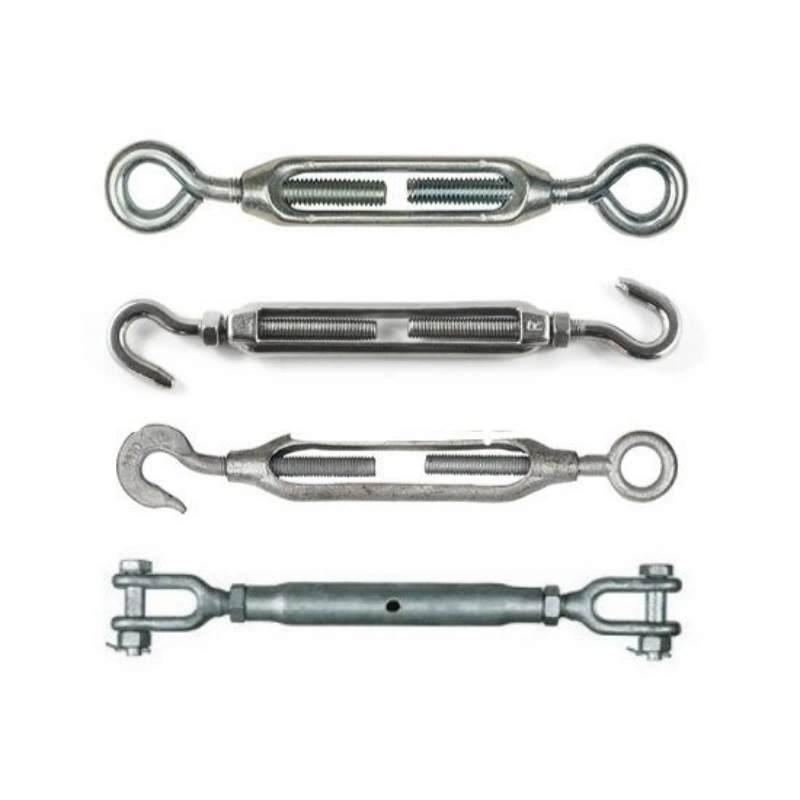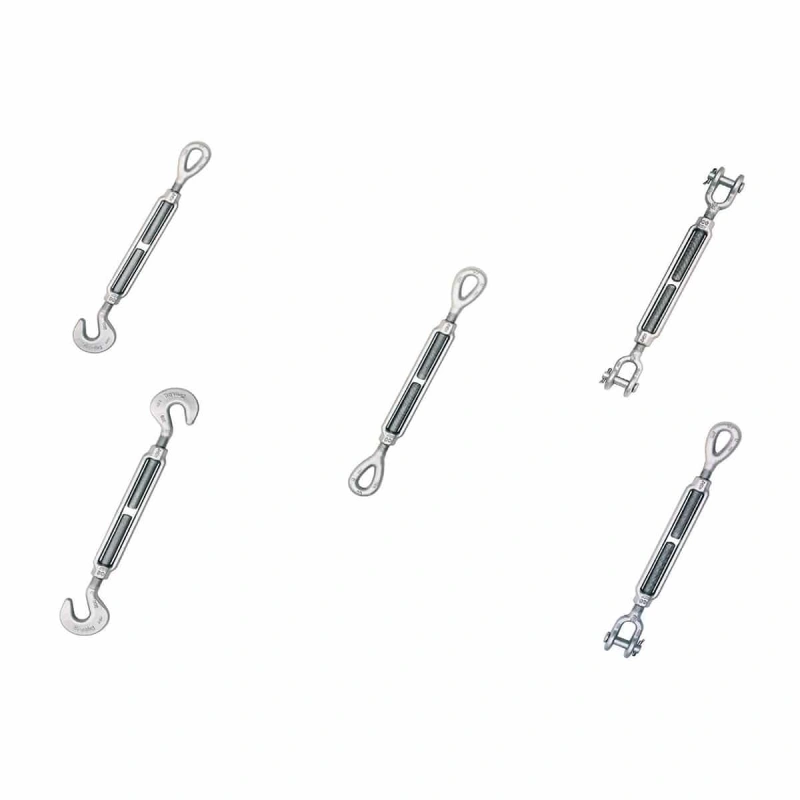When you compare a bow shackle vs a d shackle, you find key differences in shape and function. Bow shackles have a rounded design that lets you connect multiple slings or handle loads from different angles.
D shackles work best for straight-line lifting operations and provide a secure fit for chains or wire ropes. Choosing the right shackle keeps your team safe and your job efficient. The table below highlights where each type excels:
Shackle Type | Common Applications | Industries |
|---|---|---|
D Shackles | Lifting moderate to heavy loads | Manufacturing, Construction, Shipping |
Bow Shackles | Handling multiple loads from different angles | Manufacturing, Construction, Shipping, Oil and Gas, Heavy Engineering |
Key Takeaways
Bow shackles have a rounded design, allowing for multi-directional loading. Use them for complex rigging setups where flexibility is needed.
D shackles feature a straight profile, making them ideal for single, inline pulls. Choose them for straightforward lifting tasks to ensure stability.
Always check the working load limit (WLL) before using any shackle. This ensures safety and prevents equipment failure during lifting operations.
Consider space constraints when selecting a shackle. D shackles fit well in tight spaces, while bow shackles are better for larger setups with multiple connections.
Regularly inspect shackles for wear and corrosion. Proper maintenance extends their lifespan and ensures safe operation in demanding environments.
Bow Shackles and D Shackles Overview
What Are Bow Shackles?
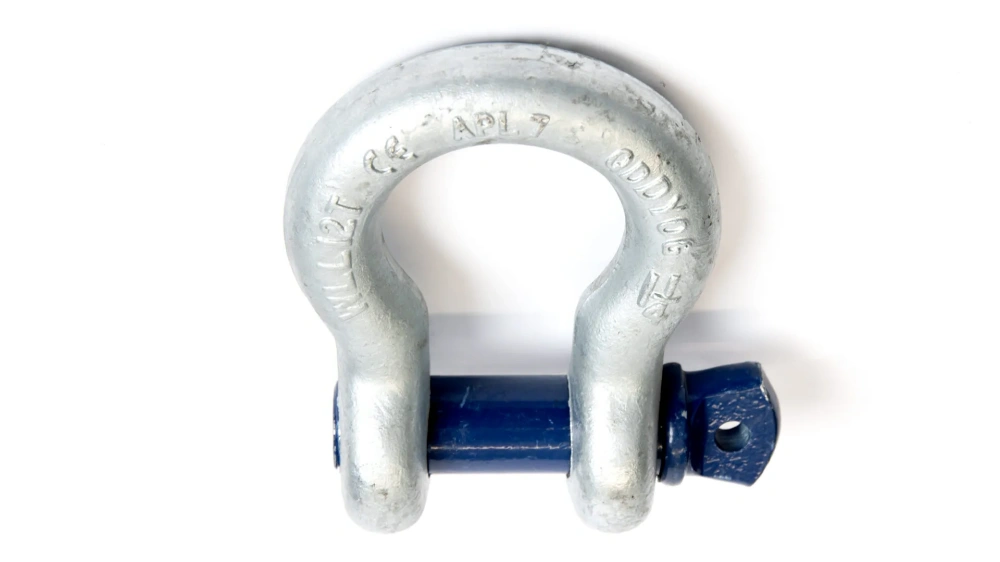
Bow shackles stand out among the different types of shackles due to their distinctive rounded shape. You will notice that this design allows bow shackles to handle loads from multiple directions.
In the marine and construction industries, you often use bow shackles when you need to connect several slings or accommodate shifting forces. The wide opening makes it easy to attach bulky lifting straps or multi-leg slings.
Powerful Machinery’s Stainless Steel Shackles offer excellent corrosion resistance and durability, making them a reliable choice for harsh environments.
Tip: Bow shackles work best when you need flexibility in load direction or plan to rig complex lifting setups.
Bow shackles are commonly used in rigging systems, especially where distributive loads occur. Their robust construction supports heavy-duty tasks and ensures safety in demanding conditions.
International safety standards, such as ASME and OSHA, require manufacturers to meet strict guidelines for material quality and load ratings. This compliance helps you select products that deliver both performance and peace of mind.
What Are D Shackles?
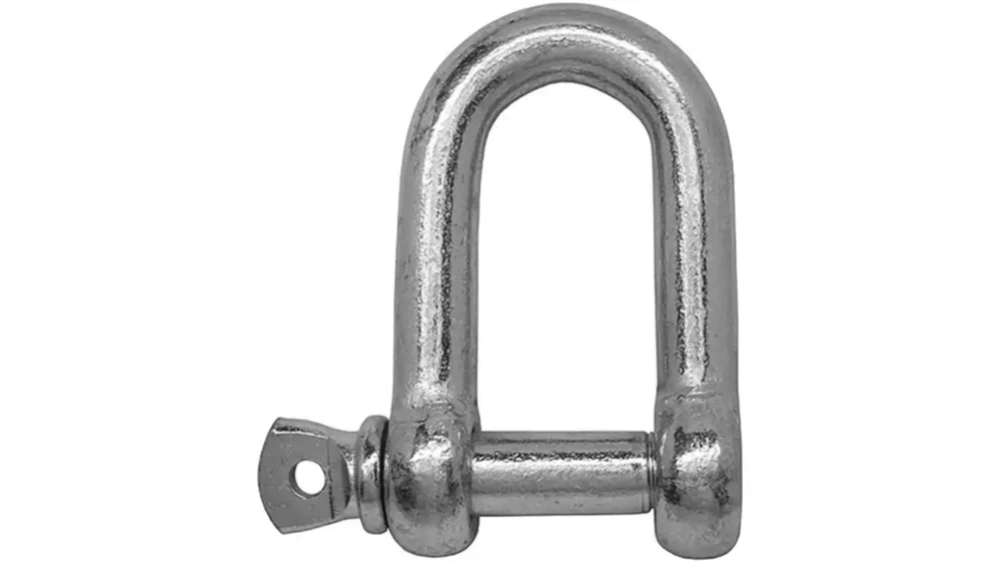
D-shackles feature a streamlined, narrow profile that restricts lateral movement. You will find d-shackles ideal for straight-line lifting operations, where the force remains consistent and aligned. The shape of d-shackles provides a secure fit for chains, wire ropes, or lifting slings.
Powerful Machinery’s Stainless Steel Screw Pin D Shackles excel in these applications, offering easy installation and superior corrosion resistance.
Bow shackles have a rounded shape that accommodates multi-directional loading, making them ideal for applications with distributive loads.
D shackles feature a streamlined shape that limits lateral movement, making them more suitable for single, inline force applications.
Bow shackles are commonly used in rigging systems, while d shackles are preferred for towing operations and industrial lifting tasks.
When you compare different types of shackles, you see that d-shackles provide stability and strength for single-direction lifts. Their design minimizes side loading, reducing the risk of failure. You should always check the working load limit and safety factor before selecting d-shackles for your project.
Type of Shackle | Material Composition | Load Ratings (WLL) | Safety Factor |
|---|---|---|---|
D Shackle | Alloy Steel, Carbon Steel, Stainless Steel, High-Strength Steel | 0.5t ~ 85t | 4:1, 5:1, 6:1, 8:1 |
International safety standards shape your choices in global markets. These standards ensure that shackles meet ethical sourcing and responsible supply chain practices. You benefit from products that not only perform well but also support sustainable and safe operations in the construction and maritime sectors.
Bow Shackle vs D Shackle: Key Differences
Shape and Design
When you compare a bow shackle vs a d shackle, the first thing you notice is the difference in shape. Bow shackles have a circular or rounded body. This design gives you more space for attachments and allows for greater flexibility in rigging.
D-shackles, on the other hand, have a straight, narrow profile that resembles the letter “D.” This shape limits movement but provides a secure fit for straight-line connections.
Feature | Bow Shackles | D-Shackles |
|---|---|---|
Shape | Circular shape providing more space for attachments | Shaped like the letter D, with a semi-circular end |
Space for Attachments | More space for wide lifting straps | Narrower opening, less space for attachments |
Side Load Resistance | Better resistance to side loads due to the shape | Prone to bending or failing under side loads |
Powerful Machinery’s G209 Shackle stands out as a prime example of a bow shackle with a wide opening and robust construction. You can use it for multi-leg slings or when you need to connect several lifting points.
The Stainless Steel Screw Pin D Shackles from Powerful Machinery offer a compact design, making them ideal for straight-line pulls and tight spaces.
Note: The shape of the shackle directly affects how you can use it in your rigging setup. Always match the shackle design to your application needs.
Load Handling
The way each shackle handles loads is another key difference in the bow shackle vs d shackle debate. Bow shackles excel in situations where you need to manage multi-directional forces.
Their rounded design allows you to connect multiple slings or handle shifting loads without compromising safety. D-shackles work best for straight, in-line pulls. Their structure provides higher safety margins for single-direction lifts but can struggle with side loads.
Shackle Type | Opening Size | Load Flexibility | Safety Margins |
|---|---|---|---|
Bow Shackle | Wider | More versatile, accommodates multiple slings | Flexible in various applications |
D Shackle | Compact | Primarily for straight pull, less flexible | Higher safety margins in specific scenarios |
You will find that bow shackles, such as the G209, are ideal for complex lifting operations where the load direction may change. D shackles, like Powerful Machinery’s Stainless Steel Screw Pin D Shackles, are preferred for single-leg slings and direct pulls.
Manufacturer specifications show that d shackles can handle higher lifting capacities in some models, but they are not suitable for side loads.
Bow shackles support various load limits and are crucial for complex lifting operations.
D shackles are preferred for single-leg slings and handle linear loads effectively.
D shackles may struggle with lateral loads, leading to potential bending or failure.
Shackle Type | Model | Lifting Capacity (tonnes) |
|---|---|---|
Bow Shackle | G-4169 | 2 to 17 |
D Shackle | G-4164 | 2 to 25 |
Bow Shackle | P-6043 | 125 to 1250 |
Bow Shackle | G-2169 | 7 to 18 |
D Shackle | G-2160 | 7 to 1550 |
Laboratory testing confirms that bow shackles perform best under multi-directional loads, while d-shackles deliver optimal results for direct, in-line pulls.
Shackle Type | Design Features | Load Performance |
|---|---|---|
Bow Shackles | Rounded design allows for multi-directional loads and angular connections | Ideal for shifting loads |
D Shackles | Straight sides optimized for direct, in-line pulls | Best for direct pulls |
Space and Application
Space constraints and application requirements play a major role in your choice between bow shackle vs d shackle. Bow shackles offer a wider opening, which makes them suitable for bulky lifting straps or when you need to connect multiple slings.
This extra space is essential in heavy loads or complex rigging scenarios. D-shackles, with their compact design, fit better in tight spaces and provide a secure connection for chains or wire ropes.
Shackle Type | Application Description |
|---|---|
Anchor (Bow) Shackles | Suitable for multi-leg slings or side loads |
Chain (D-Shaped) | Designed for straight-line loads only |
You should use bow shackles when your lifting operation involves multi-leg slings or when the load direction may shift. D shackles are the right choice for straightforward, single-direction lifts where space is limited.
Powerful Machinery’s G209 Shackle demonstrates the versatility of bow shackles in demanding environments, while their Stainless Steel Screw Pin D Shackles provide reliable performance in compact, linear applications.
Tip: Always assess your rigging environment and load direction before selecting a shackle. The right choice improves safety and efficiency.
Recent innovations in shackle design, such as wider bows, anti-rotation features, and load monitoring technology, further enhance safety and efficiency. Powerful Machinery incorporates these advancements into its products, ensuring you get the most reliable and up-to-date solutions for your lifting needs.
Pros and Cons of Bow Shackles and D-Shackles
Bow Shackles: Advantages
You gain several advantages when you choose bow shackles for your rigging needs. Their rounded design gives you more space for multiple connections, making them ideal for complex lifting setups. Bow shackles allow you to handle loads from different directions, which increases your rigging versatility.
If you work in marine, construction, or industrial environments, you benefit from their corrosion resistance and long-lasting performance. Powerful Machinery’s stainless steel bow shackles feature a protective coating that resists rust, ensuring longevity even in harsh outdoor conditions.
Feature | Description |
|---|---|
Material | High tensile Grade 6 steel |
Corrosion Resistance | Hot-dip galvanization and stainless steel construction for excellent durability |
Applications | Suitable for construction, marine, offshore, and industrial environments |
Load Versatility | Bow design supports multi-directional loading |
Tip: Bow shackles are your best choice for multi-point connections and shifting load directions.
D-Shackles: Advantages
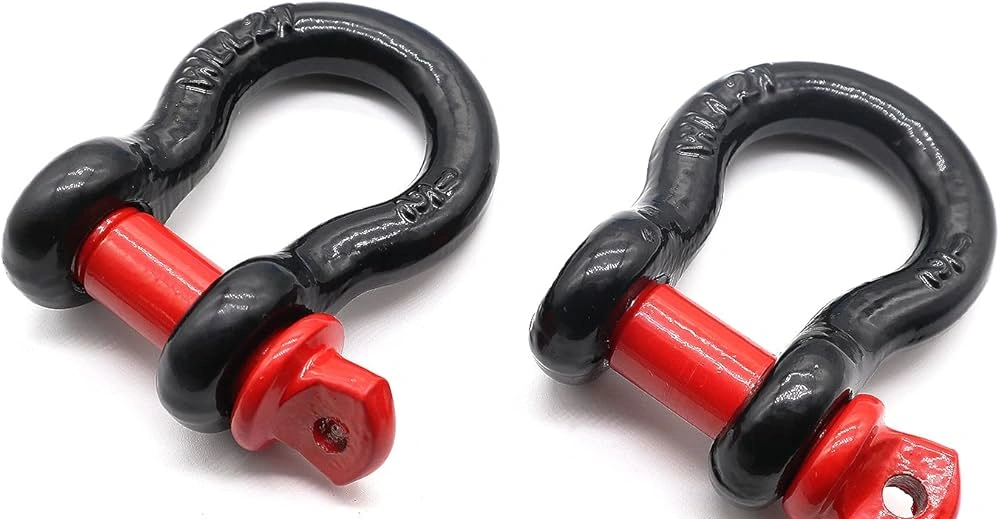
D-shackles offer you high strength and stability, especially for straight-line pulls. Their narrow profile fits well in tight spaces and provides a secure connection for chains or wire ropes. You will find d-shackles cost-effective and durable in industrial and marine settings.
Powerful Machinery’s stainless steel d-shackles deliver excellent corrosion resistance, making them reliable for repeated use. When you need a secure fit and a high safe working load, d-shackles give you peace of mind.
D-shackles excel in straight-line lifting applications.
You get high strength and stability for single-point connections.
Their compact design makes them ideal for confined spaces.
Limitations to Consider
You should consider a few limitations before selecting bow shackles or d shackles for your project. Bow shackles can handle loads from multiple directions, but their larger design may reduce overall strength compared to d-shackles. D shackles, while strong in line, are less suitable for side loads.
Twisting or bending can occur if you use them for multi-directional forces. For marine applications, always match the shackle type to your connection needs—bow shackles for multi-point, d shackles for single-point.
Bow shackles may have lower strength due to their wider shape.
D shackles are not recommended for side loads or multi-directional forces.
Always check the safe working load before use to ensure safety.
Choosing the Right Shackle
Load Direction
When you select a shackle, you must first consider the direction of the load. If your lifting operations involve straight-line pulls, you should use a D shackle. This type provides a secure fit and maximizes load capacity in a single direction. For multi-directional loads, a bow shackle offers greater flexibility.
The rounded shape allows you to connect multiple slings and handle shifting forces. Always check the working load limit and maximum breaking load to ensure safety.
Use a D shackle for straight-line lifting.
Choose a bow shackle for multi-directional or complex rigging setups.
Verify load capacity before every lift.
Space Constraints
Space plays a critical role in your decision. D shackles feature a compact design, making them ideal for tight spaces or confined environments. You often find these shackles in marine, rigging, and towing applications where space is limited.
Bow shackles work better in larger setups, especially when you need to connect bulky objects or multiple slings.
D shackles fit well in restricted areas.
Bow shackles provide versatility for larger or more complex arrangements.
Tip: Assess your workspace before choosing a shackle. The right fit improves safety and efficiency.
Cost Factors
Cost can influence your choice, especially for large projects. Bow shackles usually cost slightly more than D shackles, but the price difference is minimal. D shackles offer a more economical solution when you need to purchase in bulk.
You should balance cost with performance and durability, especially when selecting shackles for demanding environments.
When you work outdoors or in marine settings, consider environmental factors. Stainless steel shackles resist corrosion and last longer in harsh conditions. Regular inspections and maintenance help prevent rust and ensure your shackles maintain their rated load capacity.
Application Examples
You encounter bow shackles and D shackles in many industries. Bow shackles excel in lifting, rigging, towing, and anchoring tasks, especially when multiple connections are required. D shackles are common in marine and industrial settings where a single connection point is needed.
Shackle Type | Common Applications | Description |
|---|---|---|
Bow Shackles | Lifting, rigging, towing, anchoring | Used for multiple connections and bulky objects |
D Shackles | Marine, rigging, industrial | Used for single connection points |
Powerful Machinery offers a full range of stainless steel shackles and screw pin D shackles for marine, construction, and industrial use. You can select the right product based on your load capacity needs and environmental requirements.
Powerful Machinery Shackle Solutions
Stainless Steel Screw Pin D Shackles
You need reliable hardware for demanding environments. Powerful Machinery’s Stainless Steel Screw Pin D Shackles deliver outstanding performance in marine, industrial, and outdoor settings. You benefit from their robust construction and user-friendly design. The table below highlights the key features that set these shackles apart:
Feature | Description |
|---|---|
Superior Corrosion Resistance | Made from AISI304 or AISI316 stainless steel, these shackles offer excellent durability and resistance to corrosion, making them ideal for harsh environments like marine, chemical, and outdoor applications. |
Perfect for Straight-Line Loads | The ‘D’ shape of the shackles ensures stable alignment with chains, providing reliable support for in-line, straight-line applications. |
Convenient Screw Pin Design | Featuring a screw pin, these shackles allow for easy, tool-free adjustments, providing quick and secure connections. |
Versatile for Harsh Environments | Engineered for use in marine, outdoor, and corrosive conditions, the shackles offer simple, reliable installation and require minimal maintenance. |
You can explore the full range of Stainless Steel Screw Pin D Shackles on the official product page.
Stainless Steel Shackles
You want shackles that stand up to tough jobs and resist corrosion. Powerful Machinery’s stainless steel shackles give you that confidence. You get high tensile strength and a smooth finish for easy handling.
These shackles work well in marine, construction, and industrial applications. You can choose from several types, including screw pin D shackles and bolt-type shackles, to match your specific needs.
Note: Powerful Machinery’s shackles are rigorously tested and fully certified to meet or exceed major international safety and quality standards.
ISO9001
ISO14001
TUV Rheinland
EURO CERT
EAC
Geprufte Sicherheit
OSHA
ASTM
China Classification Society
Korean Register
You can review the complete stainless steel shackle lineup on the product page.
G209 Shackle Applications
You often face complex lifting and rigging challenges. The G209 Shackle from Powerful Machinery adapts to a wide range of industries. The table below shows how you can use G209 shackles in real-world scenarios:
Industry | Application Description | Example Use Case |
|---|---|---|
Construction | Lifting heavy structural components and securing loads during transport | Custom G209 shackles were designed for a project requiring the lifting of pre-fabricated beams. |
Maritime | Handling shipping containers and equipment on docks | G209 shackles facilitate smooth operations in loading and unloading at ports. |
Oil and Gas | Lifting and securing drilling equipment and materials | Used extensively for securing various equipment during drilling operations. |
You can find more details and technical specifications for the G209 Shackle on the product page.
Conclusion
You must choose between bow shackles and d shackles based on your lifting needs. The table below highlights their safety performance:
Type of Shackle | Design Characteristics | Safety Performance |
|---|---|---|
D-Shackles | Suited for straight-line pulling; not suitable for sideloading | Limited versatility in lifting scenarios |
Bow Shackles | Accommodates loads from multiple directions; preferred for shifting setups | More versatile and safer in various lifting scenarios |
Selecting the right shackle improves safety and efficiency.
You prevent equipment failure and reduce accident risk.
You meet OSHA and ASME standards.
You enhance operational effectiveness.
Powerful Machinery’s certified shackles deliver reliability. For complex projects, consult with experts to ensure optimal safety.
FAQ
What is the main difference between a bow shackle and a D shackle?
Bow shackles have a rounded shape for multi-directional loads. D shackles feature a straight profile for in-line pulls.
Bow Shackle | D Shackle |
|---|---|
Multi-directional | Straight-line |
How do you choose the right shackle size?
You should match the shackle size to your load requirements and the diameter of your chain or rope.
Tip: Always check the working load limit (WLL) before use.
Are stainless steel shackles suitable for marine environments?
Yes, you can use stainless steel shackles in marine settings. They resist corrosion and provide reliable performance in saltwater and harsh conditions.
Can you use a D shackle for multi-leg slings?
You should avoid using D shackles for multi-leg slings. Bow shackles work better for connecting multiple slings or handling shifting loads.
How do you maintain shackles for long-term safety?
You need to inspect shackles regularly for wear, corrosion, or damage.
Clean after each use
Tighten pins before lifting
Note: Proper maintenance extends the life of your shackles.

